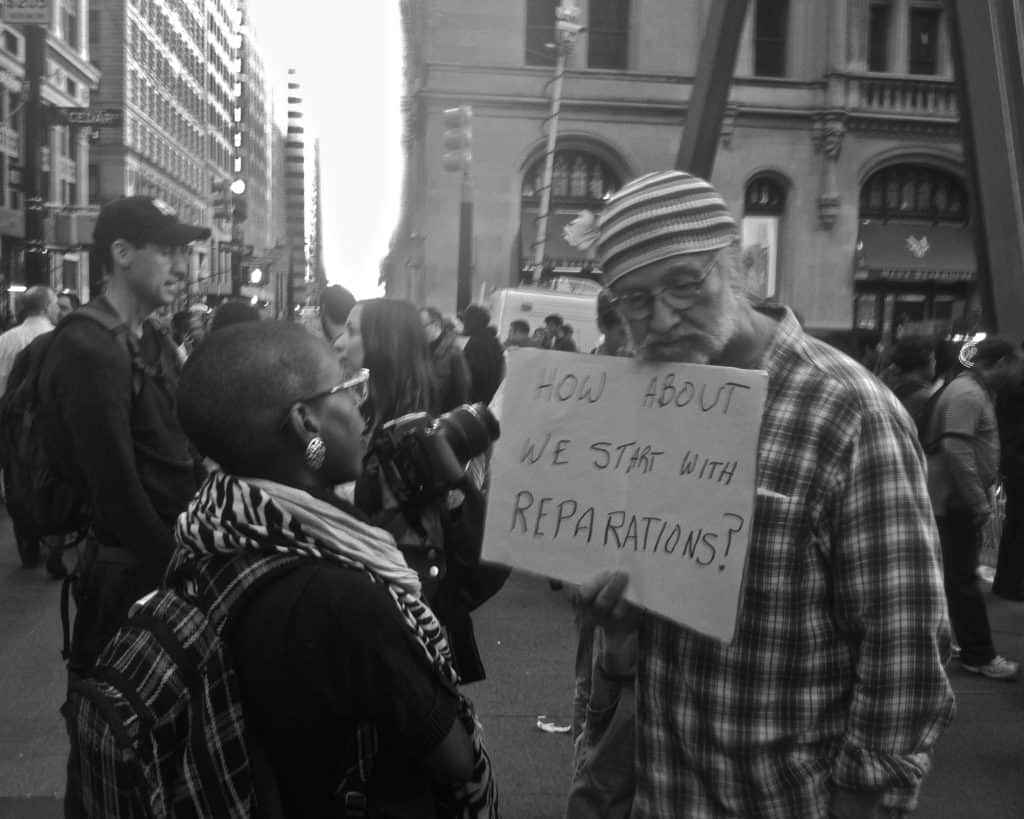Ever since the abolition of slavery more than 150 years ago, African Americans have been suffering from oppressive structures that uphold poverty. These enduring systems have resulted in the income and wealth disparities between Black and White communities we see today. According to many scholars, activists and some 2020 presidential candidates, reparations are a critical way to atone and correct for the past, while building a more equitable future.
The Pew Research Center recently found that White families are on average 10 times wealthier than their Black neighbors. This is a result of several systems that have historically sought to marginalize them. The practice of redlining
, which started in the 1920s, segregated neighborhoods according to race and socioeconomic status and systematically blocked loans and investments in minority and immigrant neighborhoods deemed “hazardous” by government surveyors.
Although redlining was made illegal in 1968 by the Fair Housing Act, which prevented discrimination against a person’s race for the sale of any dwelling, the residual effects of that practice endure and continue to segregate racial minorities from White people.
As a result, many Black people still live in poorer conditions, making it harder for them to make financial progress. Where you live is a major factor in shaping what resources and opportunities are available to you from schools to jobs, services and more. It can also have a significant
impact on your mental and physical health.
The racial wealth divide is commonly misunderstood and misperceived, said Dedrick Asante-Muhammad, NCRC’s Chief of Race, Wealth and Community. Debunking myths, often rooted in ignorance and racism, is critical to understanding it. Individual behaviors are not the reason this divide exists; rather it is the result of centuries of oppressive structures that have prevented Blacks from amassing wealth.
The racial wealth divide has grown over the years due to a regressive economy, placing most of this country’s wealth into the hands of the ultra-rich. From 1983 to 2018, Black people’s wealth decreased by around $4,000, while White people’s wealth increased by approximately $37,000.
The common phrase is true: the rich are getting richer and the poor are getting poorer. And unfortunately, poor communities tend to consist of Black and Latinx Americans, hurting those who are already systematically disadvantaged. However, there is still a lot of contention surrounding reparations, which highlights this country’s lack of will in addressing racial economic inequality, Asante-Muhammad said.
“To get real basic about it, Whites are resistant to investing substantial amounts of wealth into non-White communities,” Asante-Muhammad said.
He noted that the same people who are against reparations are the same people who are opposed to progressive economic policies like baby bonds and 2020 presidential candidate Sen. Elizabeth Warren’s mobility plan.
He recently co-authored an article with Chuck Collins outlining their strategy for reparations — and who exactly should be making these payments.
Even if White families did not play a role in the institution of slavery, they still benefited from and continue to benefit from a long-standing tradition of White privilege, the authors wrote. However, they suggest that some owe a greater debt than others.
“The bill for reparations … go first to the mostly White, ultra-wealthy Americans who’ve benefited most,” Asante-Muhammad and Collins wrote in their guide,
Ten Solutions to Bridge a Racial Wealth Divide.
Reparations go beyond remedying the financial and psychological legacy of slavery. Many African Americans are descendants of enslaved people who were forcibly removed from their homes and families to endure a passage across the Atlantic to the unknown. Slaves were tortured, raped and murdered while forced to work in severe conditions. This forced labor formed the foundations for this country’s wealth and development, and it was also the beginning of the racial wealth divide.
Therefore, reparations are necessary not only to bridge a substantial wealth gap, but also to educate people on slavery and its lasting effects. Asante-Muhammad and Collins believe these payments should also be used to fund educational programs on the history of African Americans by building exhibits and museums that are informative and open to the public.
“Most people who seriously look at reparations don’t think it is a check or a series of checks from one economic program,” Asante-Muhammad said.
For example, the German government instituted reparations that are more than just writing checks to victims of Nazi’s crimes. Teachers now use a mandatory curriculum to educate students on the country’s atrocities, and the country has marked historical sites to memorialize the genocide of millions of people.
Therefore, reparations go beyond just an investment of money and should also include a historical recognition, which could include instituting a more comprehensive education on the history of African Americans, Asante-Muhammad said.
“Reparations are supposed to be a recognition coming to grasp and a pathway forward to give beyond the inequality of the past,” he said.
As the 2020 presidential election looms and important decisions about our country’s future lie in the hands of millions of voters, they will also be deciding on how we as American’s address our history of slavery and systematic oppression.
Noor Adatia was a Communications/Development Intern at NCRC.
Photo by Tyler Merbler on Flickr



